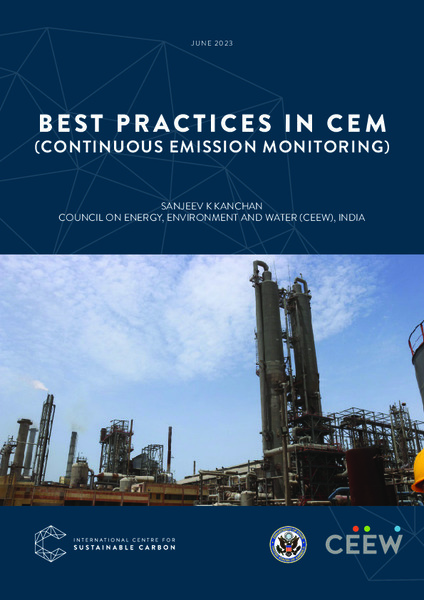| dc.contributor | Industry and Economy Division | en_US |
| dc.contributor.author | Sanjeev, K Kanchan | en_US |
| dc.contributor.author | International Center on Sustainable Carbon | en_US |
| dc.coverage.spatial | India | en_US |
| dc.date.accessioned | 2023-07-27T05:21:13Z | |
| dc.date.available | 2023-07-27T05:21:13Z | |
| dc.date.issued | 2023-06 | |
| dc.identifier.uri | https://wedocs.unep.org/20.500.11822/43063 | |
| dc.description | India has set challenging new emission limits for sources such as coal-fired power plants. For this legislation to be effective, the sector must be able to monitor emissions accurately to ensure that any preventative measures or reduction strategies will be effective and can be verified. Continuous emission monitoring systems (CEMS) have been developed to automate the accurate quantification of various pollutants from emission sources. CEMS must be operated and maintained to minimum performance standards to produce consistently valid emission measurements.
This document is intended to act as a single guidance document on best practices for the implementation of CEMS in India, regardless of which international approach is used. This should be a living document, to be updated by Indian stakeholders as the country moves towards establishing its own unified guidance documents. | en_US |
| dc.description.uri | https://www.unep.org/globalmercurypartnership | en_US |
| dc.format | pdf | en_US |
| dc.language | English | en_US |
| dc.rights | Public | en_US |
| dc.subject | mercury | en_US |
| dc.title | Best practices in CEM (Continuous Emissions Monitoring) | en_US |
| wd.identifier.sdg | SDG 3 - Good Health and Well-Being | en_US |
| wd.identifier.sdg | SDG 14 - Life below Water | en_US |
| wd.identifier.sdg | SDG 15 - Life on Land | en_US |
| wd.identifier.sdg | SDG 17 - Partnerships for the Goals | en_US |


